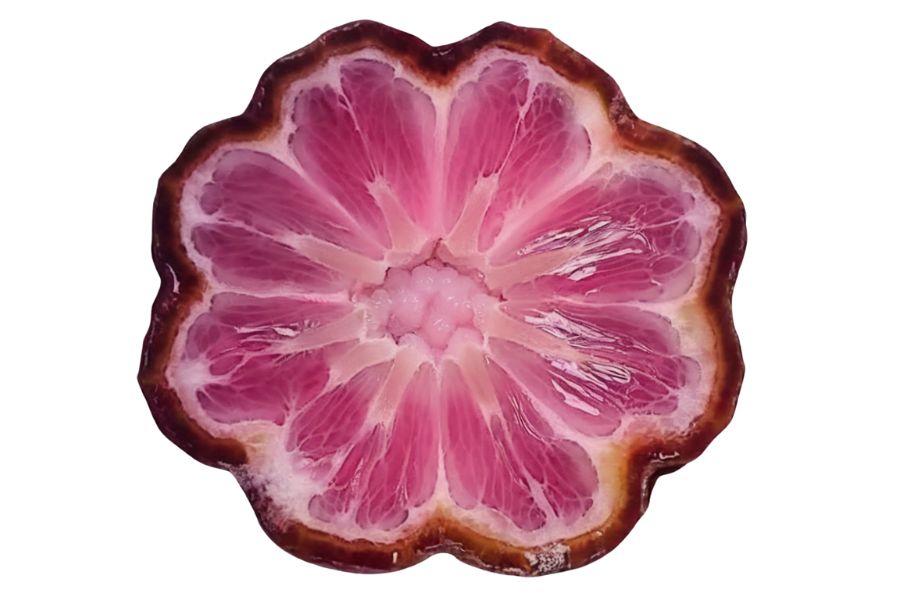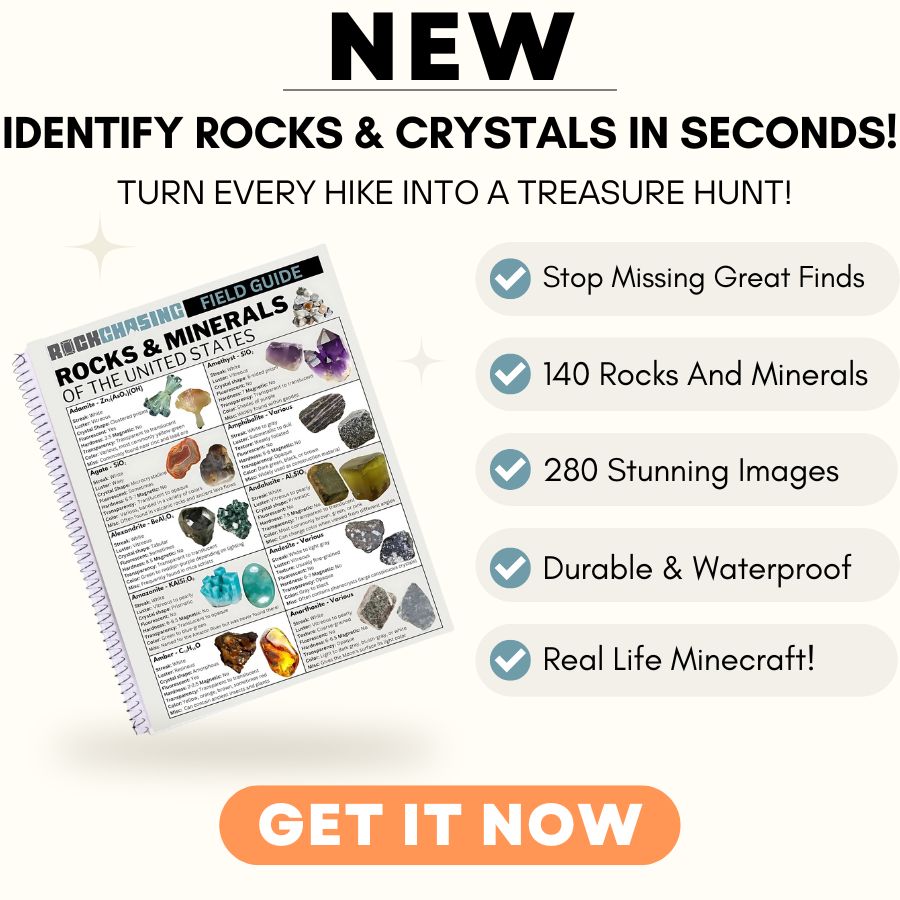North Carolina’s mountains hide some amazing rocks and minerals. One special find is rhodochrosite, a pink stone that many collectors love. You don’t need to be an expert to enjoy looking for these gems.
I’ve spent many weekends digging through North Carolina soil for these pretty pink stones. Sometimes I find nothing. Other times I go home with small pieces that make the whole trip worth it. The thrill of finding your first rhodochrosite is hard to beat.
Most locals don’t even know these pink treasures are sitting in their backyard. The hunt can get muddy and tiring, but that first flash of pink in the dirt makes you forget all about your sore back. Anyone can grab a bucket and join the search. You might get lucky too.
How Rhodochrosite Forms Here

Rhodochrosite forms from manganese-rich waters seeping through cracks in rocks. When these mineral-heavy solutions mix with carbonate materials (like limestone), the magic happens!
Over time, as temperatures and pressures change deep underground, the manganese and carbonate ions come together and slowly crystallize. Sometimes, it forms in beautiful stalactites in empty spaces in rocks, while other times it shows up in hydrothermal veins alongside other minerals.
The most stunning specimens often form when the conditions are just right (not too hot, not too cold) letting the crystals grow slowly into those gorgeous pink rhombohedral shapes we love so much.
Types of Rhodochrosite
Rhodochrosite occurs in several distinct varieties. From delicate pink bands to deep crimson crystals, these variations showcase the diverse beauty of this remarkable mineral.
Pink Rhodochrosite
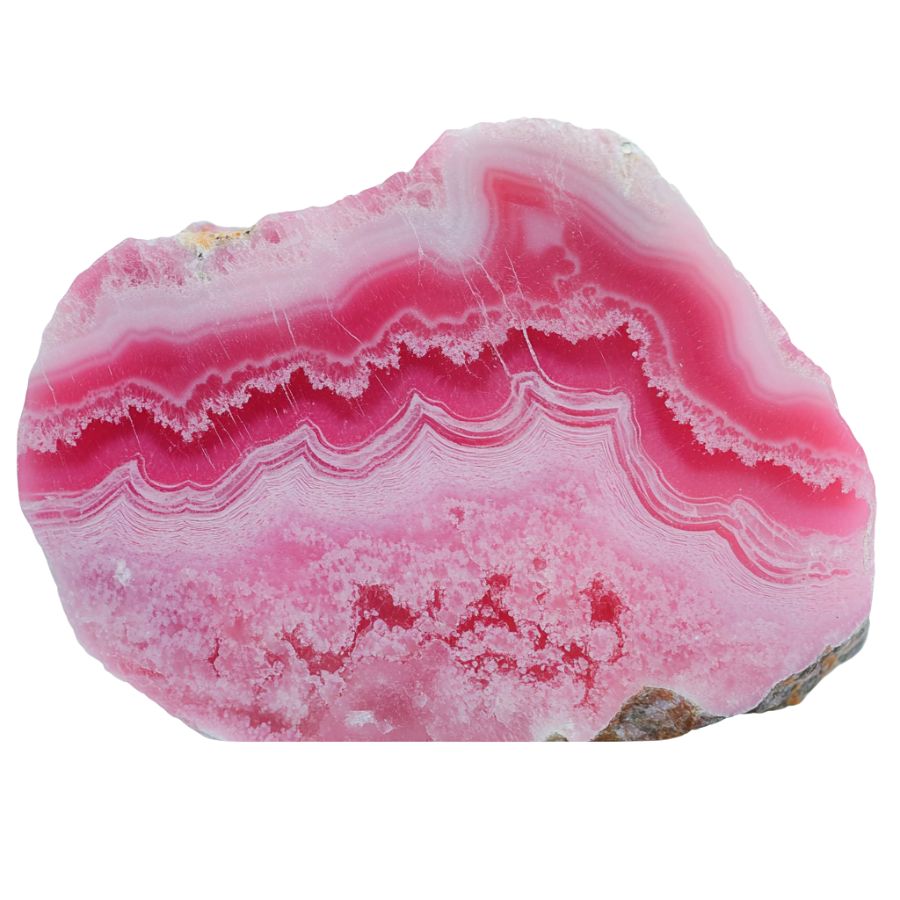
Pink Rhodochrosite displays delicate pink shades that range from soft pastel to deep rose pink. The stone features beautiful banding patterns that create swirling designs throughout its surface.
The translucent to semi-translucent nature of Pink Rhodochrosite adds to its visual appeal. This stone has a special trigonal crystal system that sometimes produces rare transparent crystals.
Fine specimens with clear, transparent crystals are particularly valuable. The best examples show sharp color zones and distinct banding patterns. Stone’s intricate patterns often resemble landscapes or abstract art.
Red Rhodochrosite
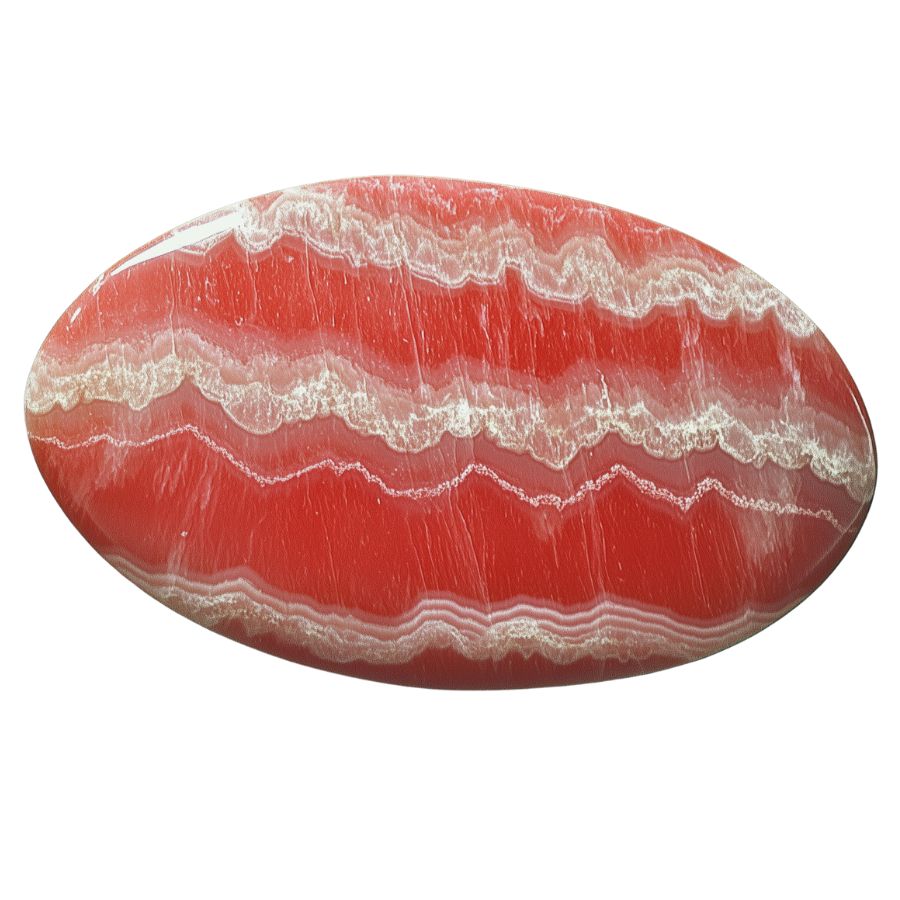
Red Rhodochrosite stands out with its bold, vibrant colors that range from bright red to deep crimson. Its intense red coloring comes from its high manganese content.
This variety can form in interesting shapes, including rhombohedral crystals and stalactite formations. When cut and polished, these formations reveal stunning internal patterns.
The crystal structure of Red Rhodochrosite allows it to form in large, well-defined specimens. These pieces often show sharp color transitions and clear crystal faces. The surface has a bright, glass-like shine when polished.
Some specimens feature dramatic color zoning, where deeper reds blend into lighter shades. This natural gradient effect makes each piece distinct and visually interesting.
Trapiche-like Rhodochrosite
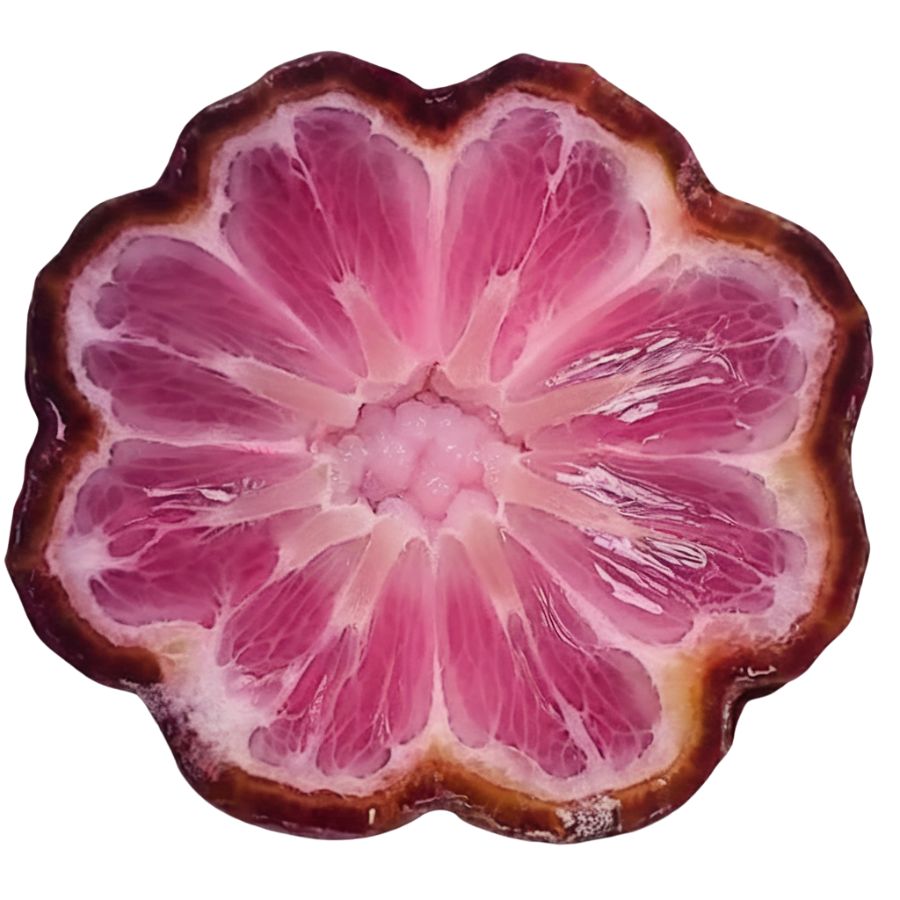
Trapiche-like Rhodochrosite showcases a remarkable star or flower-like pattern that makes it truly special. This pattern forms when crystals grow in a specific way, creating symmetrical rays that extend from the center. The result looks like a wheel with spokes or a blooming flower.
The formation process creates distinct sections within the crystal, each with its own character. These sections join at the center point, creating a natural geometric design.
When the stone is cut perpendicular to its main growth axis, its visual effect is enhanced. This orientation reveals the full beauty of the pattern and shows how the crystal sections fit together perfectly.
South African Rhodochrosite
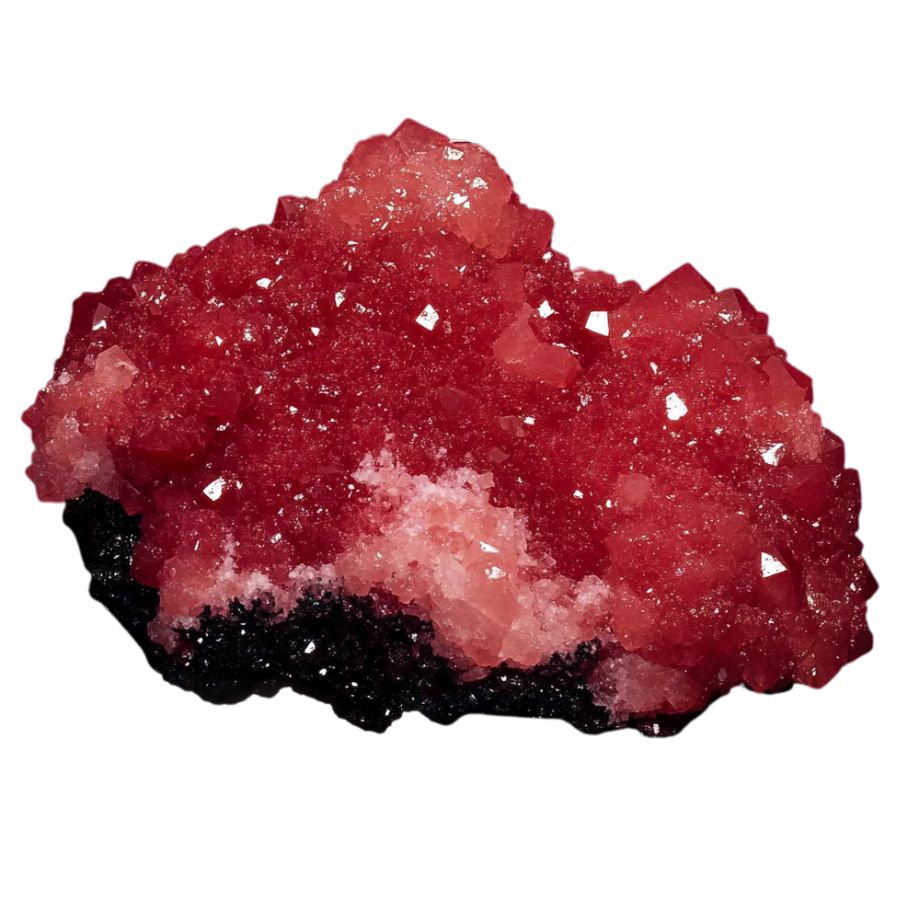
South African Rhodochrosite is known for its deep, rich blood-red color. This intense coloring sets it apart from other varieties. The stone often shows excellent clarity and depth of color which makes it particularly striking.
The internal structure of this variety creates interesting optical effects. When light passes through the stone, it can create a subtle glow that enhances its natural beauty. The crystal structure allows for excellent polish, bringing out the stone’s natural luster.
Many specimens show distinctive growth patterns that form during crystallization. These patterns can create interesting visual effects, from subtle color variations to dramatic geometric designs. The combination of deep color and natural patterning makes each piece unique.
Argentine Rhodochrosite
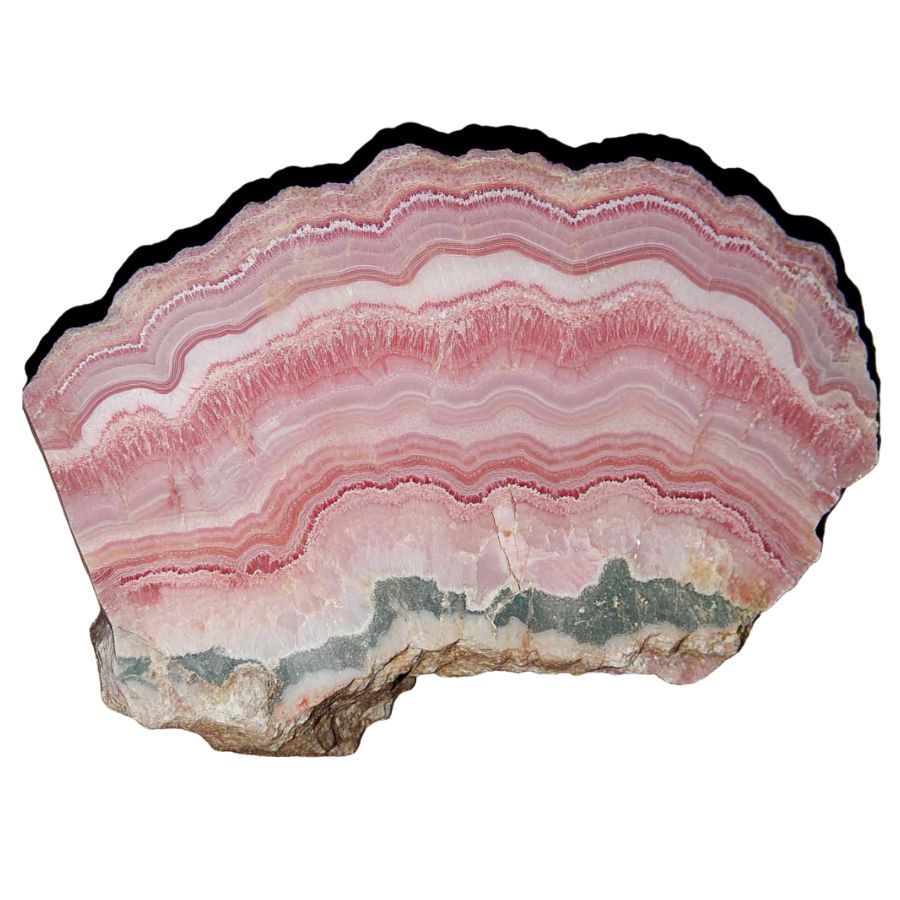
Natural bands of pink and white create stunning patterns across this remarkable stone. Delicate layering resembles fine marble artwork, making each piece unique. The colors shift between pale pink and deep red tones.
Historic significance adds to its charm as the “Inca Rose.” Ancient civilizations treasured these stones for their exceptional beauty. Many specimens show perfect crystal formations that catch and reflect light beautifully.
Exceptional purity sets Argentine specimens apart from others. Crystal formations often grow in perfect rhombohedral shapes. Traditional cutting methods reveal intricate internal patterns that collectors prize.
Colorado Red Rhodochrosite
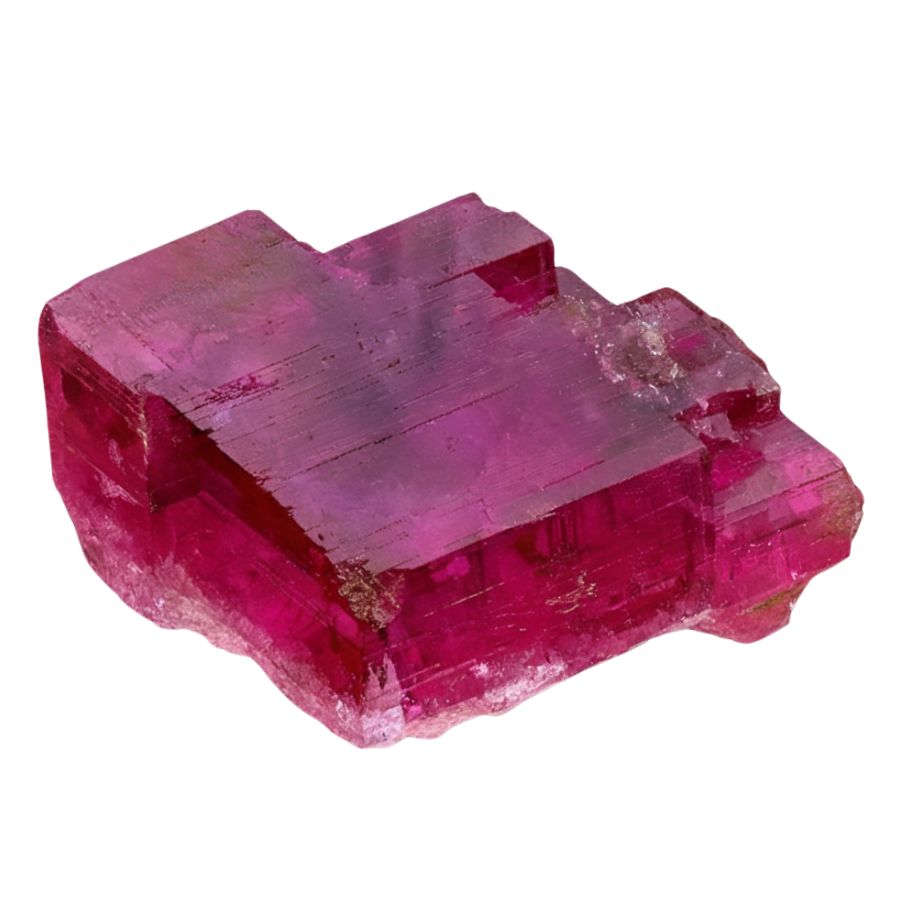
Brilliant rose-red colors distinguish this remarkable variety. Transparent specimens showcase exceptional clarity and fire. Natural light brings out deep crimson undertones that seem to glow from within.
Outstanding crystallization creates sharp, well-defined faces. Remarkable internal structures form during slow growth periods.
Superior brilliance makes these stones stand out in collections. Natural light reveals complex internal reflections. Fresh specimens maintain their vivid coloring over time. Special cutting techniques enhance the stone’s natural beauty.
Banded Rhodochrosite
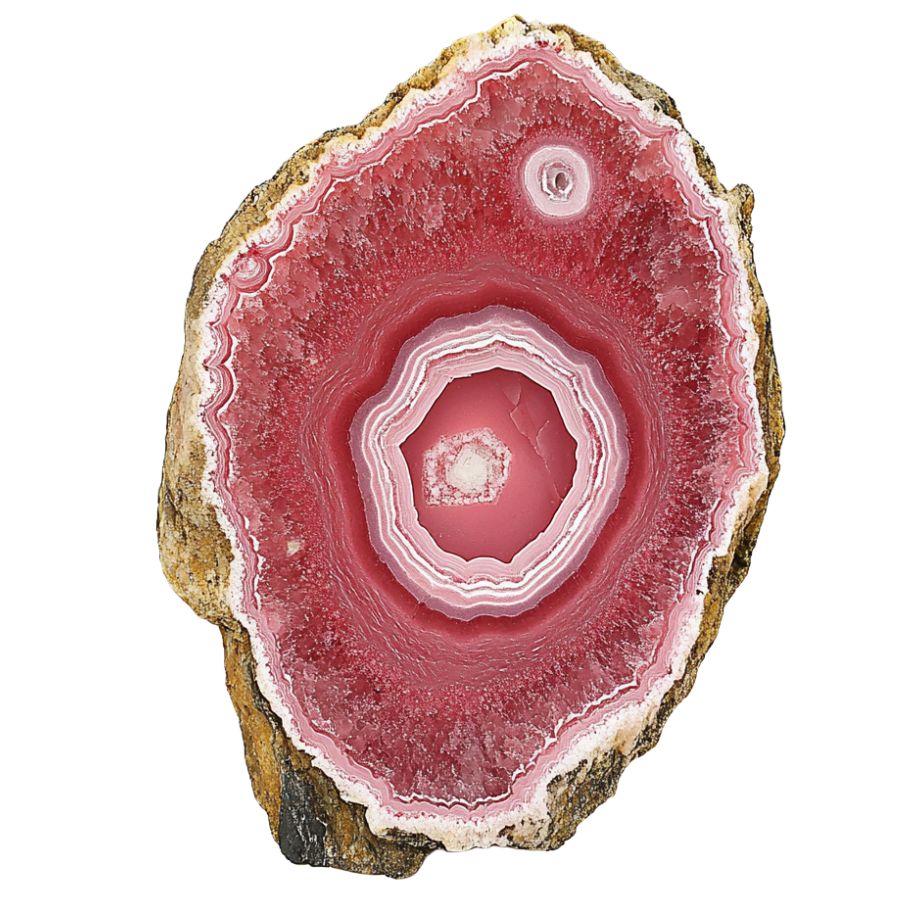
Concentric circles create fascinating patterns throughout this stone. Dramatic bands alternate between light and dark pink shades. Nature’s artistry reveals itself in each cross-section.
Perfect specimens form when mineral-rich water drips slowly over time. Natural processes create stalactite formations with distinct ring patterns.
Multiple layers build up over time to create unique patterns. Natural variation ensures no two pieces look exactly alike. Perfect cross-sections show complete circular patterns.
Peruvian Rhodochrosite
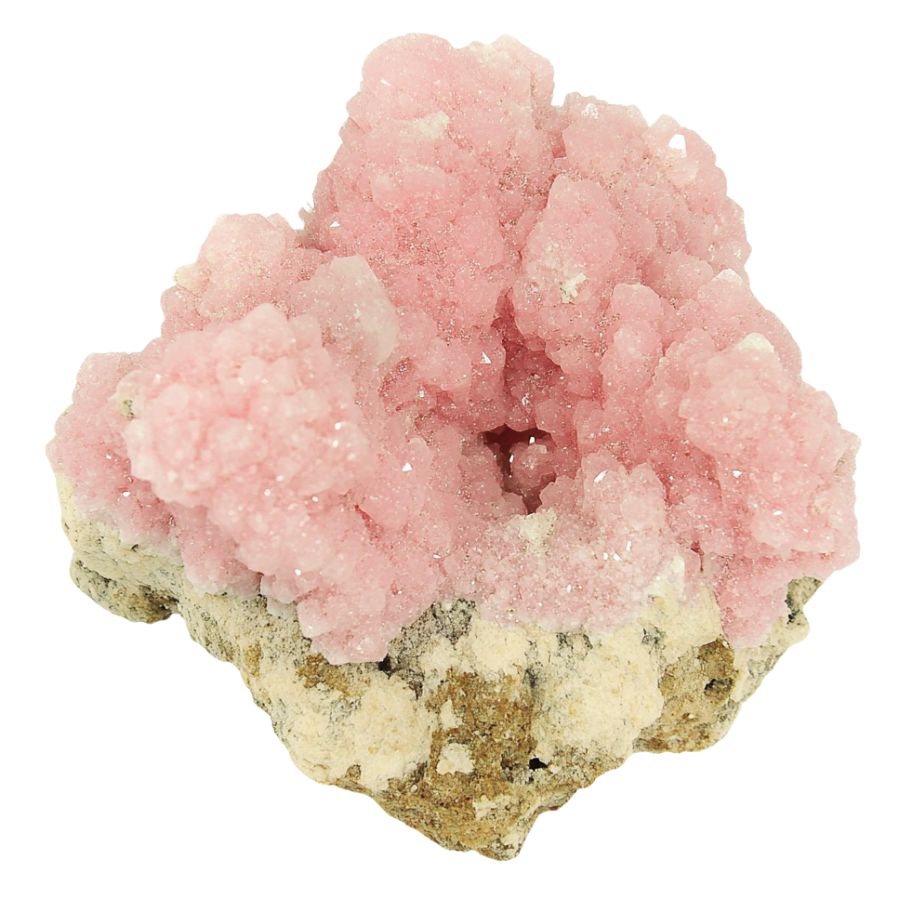
Peruvian Rhodochrosite exhibits a unique blend of pink tones with distinctive crystalline qualities. These stones often develop with exceptional clarity and a glass-like shine.
Crystal formation in these specimens tends to create angular patterns rather than rounded bands. This geometric growth pattern results in fascinating internal architectures that catch and reflect light in unique ways.
The combination of clarity and internal patterns makes these stones particularly fascinating under magnification. Collectors can observe minute details of crystal growth and formation that provide insights into the stone’s development process.
What Rough Rhodochrosite Look Like?
Rhodochrosite in its rough form can be tricky to spot, but once you know what to look for, it’s quite distinctive. Here’s how to recognize Rhodochrosite in its natural state.
Look for the Signature Pink-to-Red Color Range
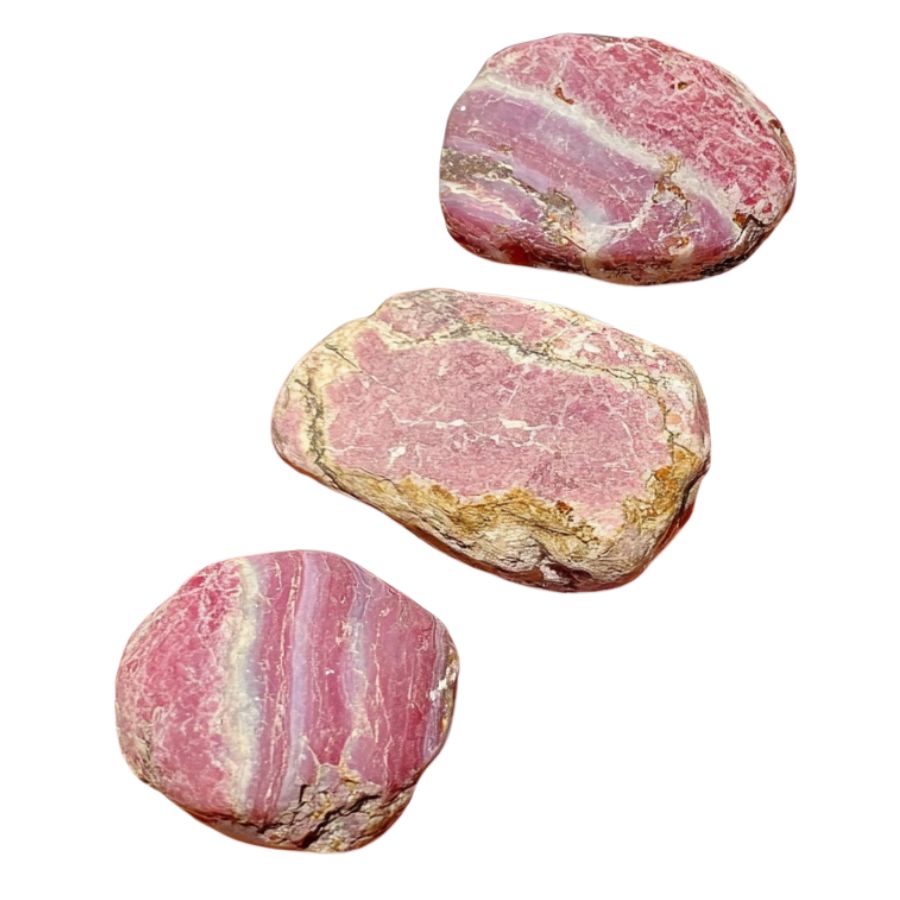
The most obvious telltale sign is its color – typically a warm, rosy pink to deep red. But here’s the thing: it’s not just one solid color. You’ll often spot subtle bands or zones of different pink shades.
Sometimes, you might see hints of brown or even light orange. Don’t dismiss it if it’s not perfectly pink – natural rhodochrosite can be surprisingly varied. The deeper, more saturated reds usually indicate higher-quality specimens.
Check for the Distinctive Crystal Structure
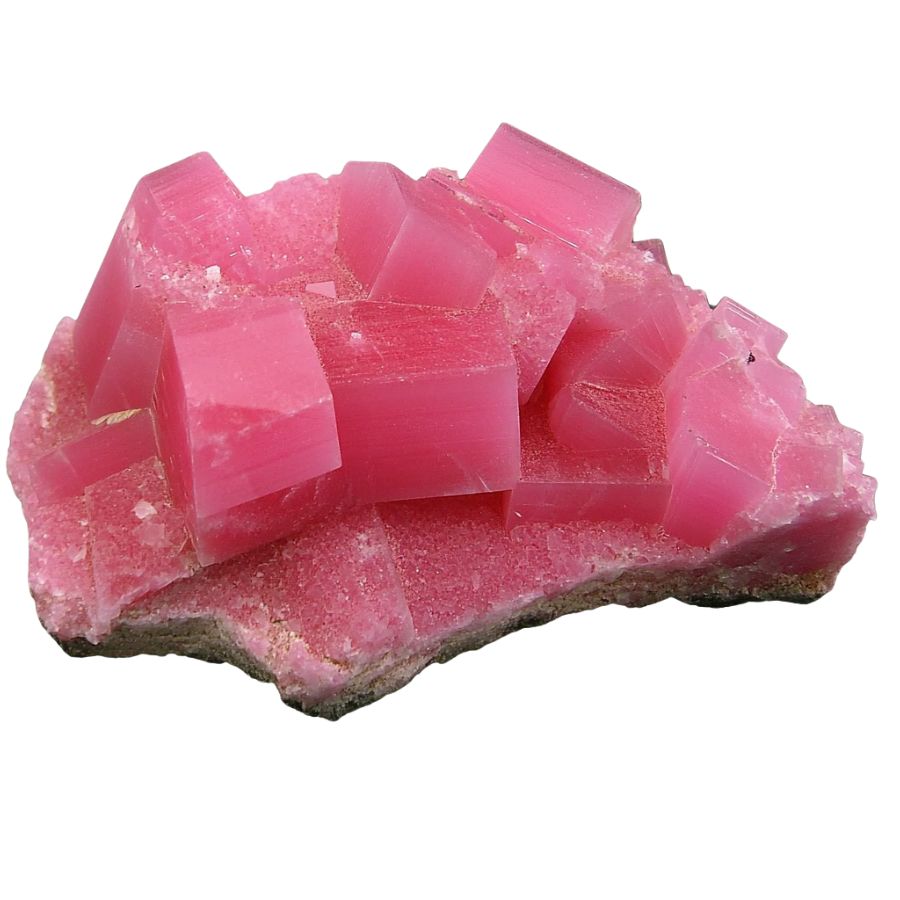
Unlike many minerals, rough rhodochrosite often forms in rhombohedral crystals. Look for angular edges and faces that meet at about 73 degrees. Sometimes you’ll find it in curved, saddle-shaped crystals (super unique!).
The crystals can be transparent to translucent, and they might appear in clusters or as individual specimens.
Examine the Surface Texture and Patterns
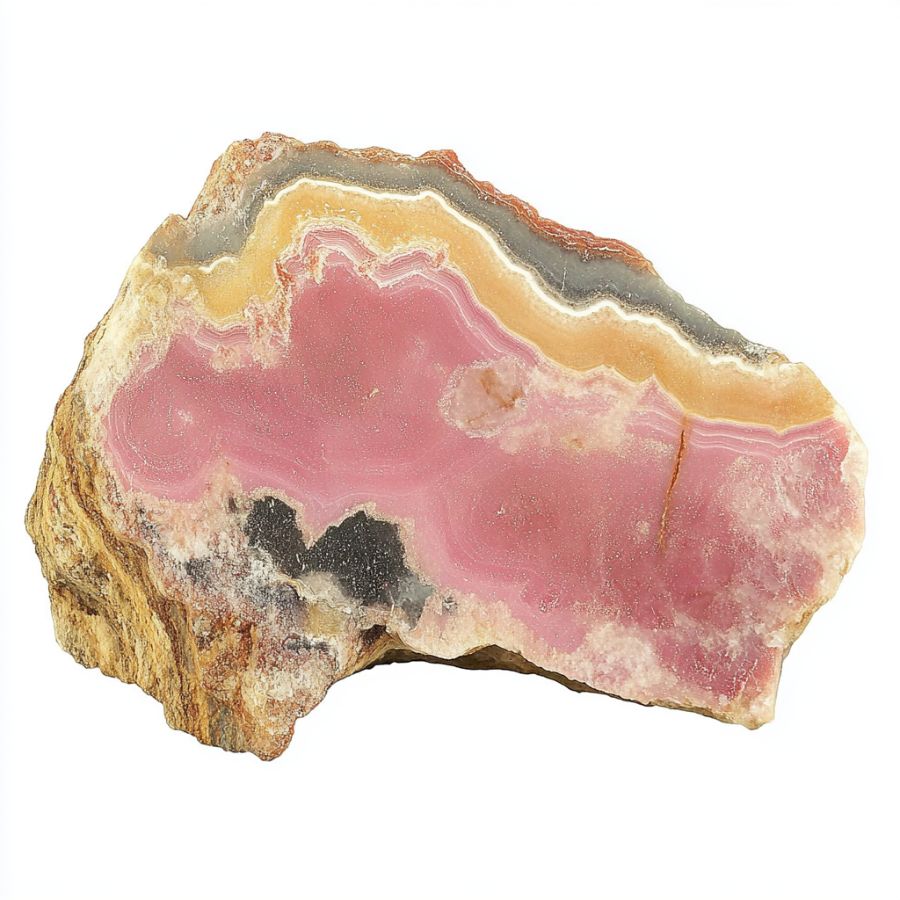
Run your fingers over the surface – rhodochrosite typically has a pearly to vitreous (glass-like) luster. Fresh breaks will show this best.
You might notice concentric banding patterns, especially in massive specimens. These bands often alternate between lighter and darker shades of pink. The surface might feel slightly smooth but not quite as glassy as quartz.
Test the Hardness and Fragility
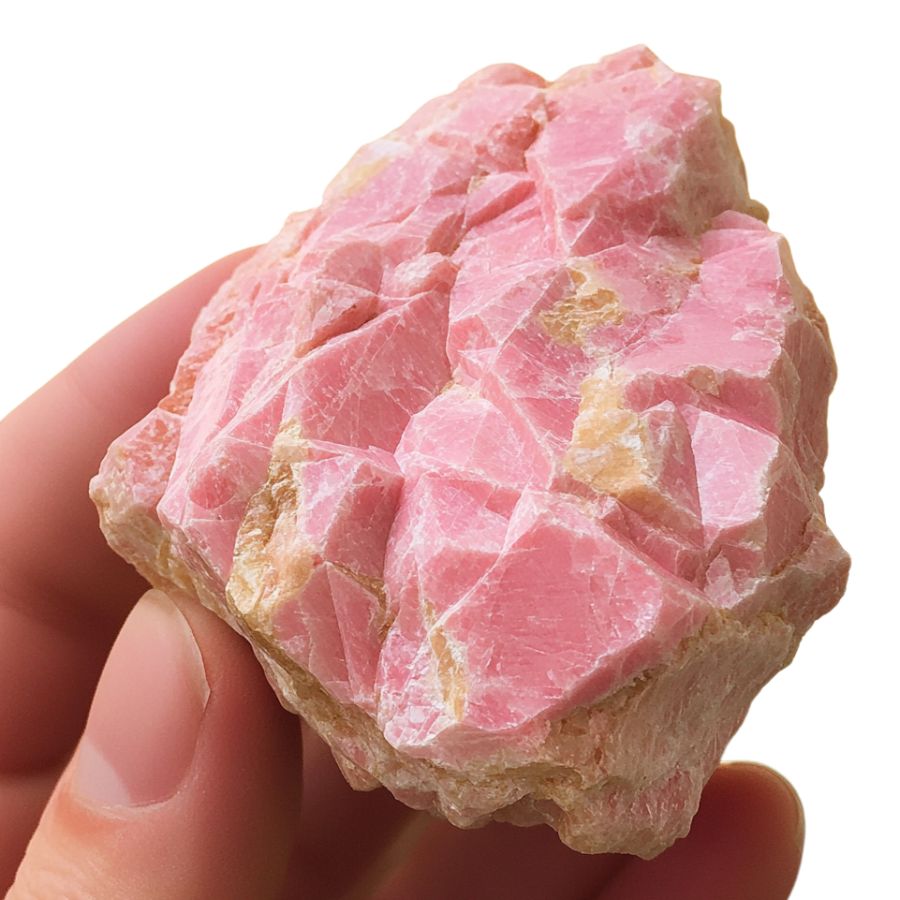
Here’s a crucial tip: rhodochrosite is relatively soft (3.5-4 on the Mohs scale). Try scratching it gently with a copper penny – if it scratches easily, you might have rhodochrosite.
Be gentle though! It’s pretty delicate and can break along cleavage planes. This softness and brittleness help distinguish it from similar-looking minerals like rose quartz, which is much harder.
A Quick Request About Collecting
Always Confirm Access and Collection Rules!
Before heading out to any of the locations on our list you need to confirm access requirements and collection rules for both public and private locations directly with the location. We haven’t personally verified every location and the access requirements and collection rules often change without notice.
Many of the locations we mention will not allow collecting but are still great places for those who love to find beautiful rocks and minerals in the wild without keeping them. We also can’t guarantee you will find anything in these locations since they are constantly changing.
Always get updated information directly from the source ahead of time to ensure responsible rockhounding. If you want even more current options it’s always a good idea to contact local rock and mineral clubs and groups
Tips on Where to Look
Rhodochrosite is a pink to rose-red mineral that often forms in veins and cavities. Here’s where you can typically find this beautiful stone while rockhounding in accessible locations across the US.
Abandoned Mine Areas
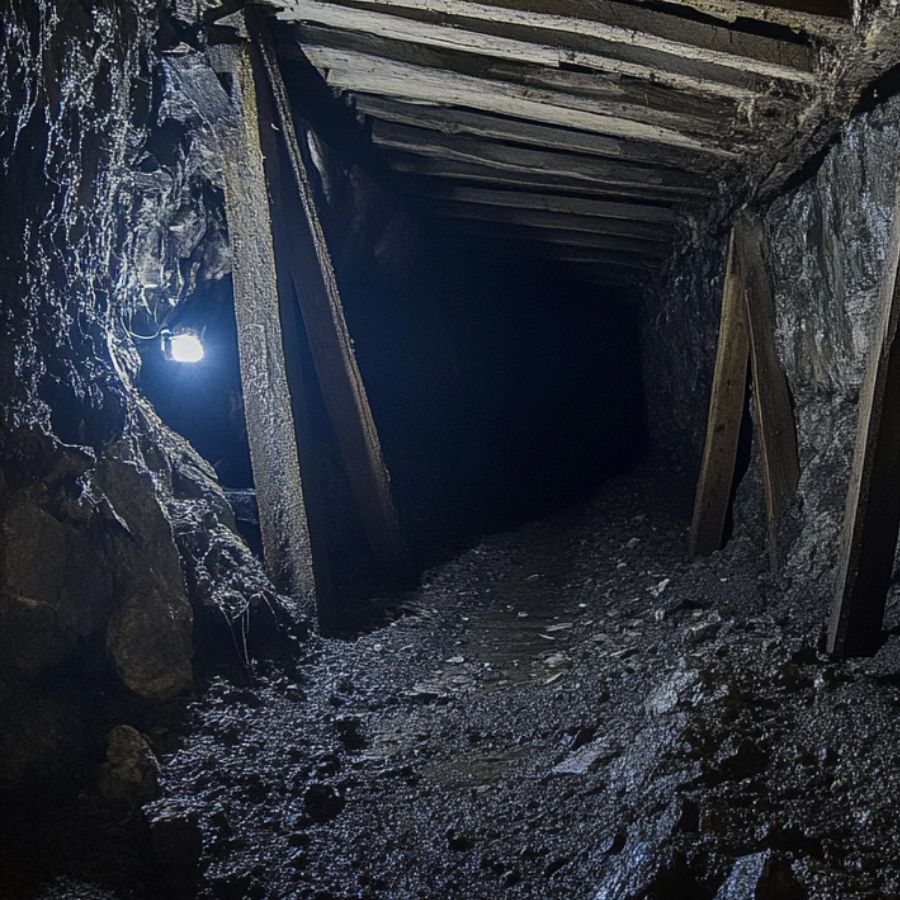
Old mines are great spots to find rhodochrosite. Check the mine dumps and tailings piles where miners discarded unwanted material. These areas often contain smaller pieces that weren’t commercially valuable but are perfect for collectors.
Look for pink-colored rocks in manganese-rich waste piles. The stone frequently appears alongside black manganese minerals, which can serve as a helpful indicator when searching.
Sometimes, you might get lucky and find specimens with beautiful banding patterns that were overlooked during mining operations.
Sedimentary Rock Formations
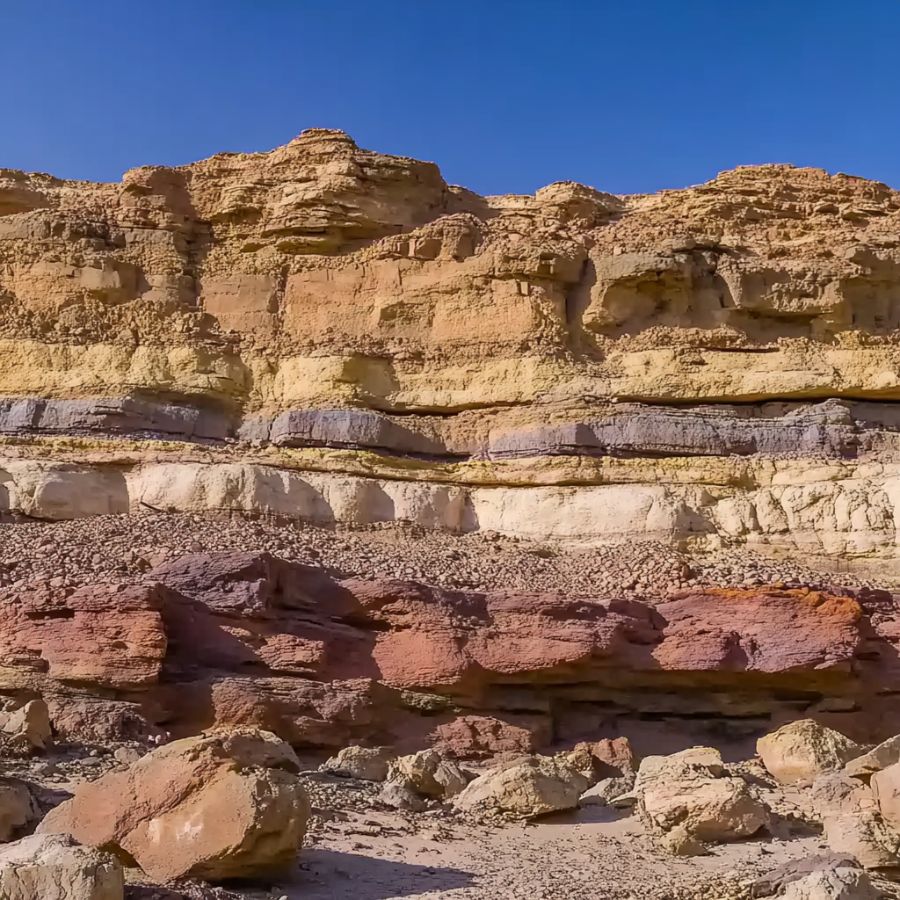
Many sedimentary rocks, especially those containing lots of manganese and calcium carbonate, can host rhodochrosite. Look for areas where limestone and dolomite are common. The stone often forms in the cracks and spaces between these rocks.
While exploring these formations, pay special attention to areas where water has carved out natural exposures, as these spots might reveal hidden rhodochrosite deposits that have been naturally weathered out over time.
Mountain Stream Beds
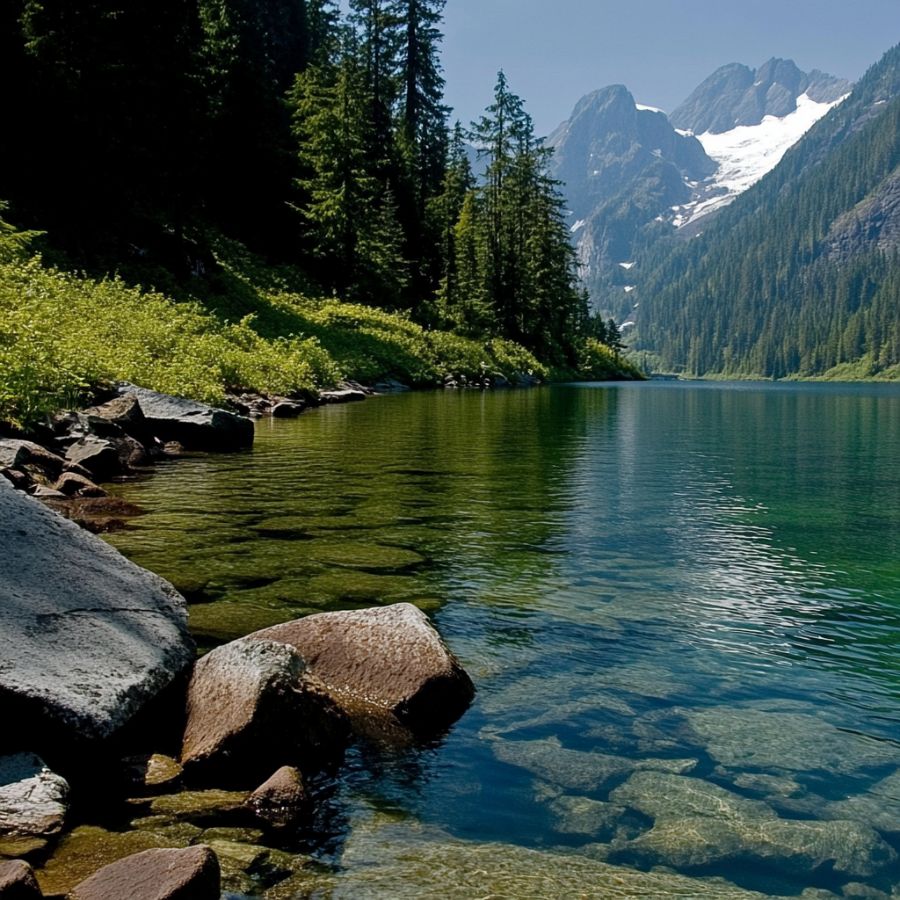
Stream beds in mountainous regions are excellent places to search. Focus on areas where the water has cut through manganese-rich rock formations, as the stream’s natural tumbling action often exposes and smooths rhodochrosite pieces.
During your search, concentrate on spots where the water slows down and creates natural collection points, such as behind large boulders or in quiet pools, because these areas tend to accumulate heavier minerals including rhodochrosite fragments that have broken free from their original source.
Some Great Places To Start
Here are some of the better places in the state to start looking for Rhodochrosite:
Always Confirm Access and Collection Rules!
Before heading out to any of the locations on our list you need to confirm access requirements and collection rules for both public and private locations directly with the location. We haven’t personally verified every location and the access requirements and collection rules often change without notice.
Many of the locations we mention will not allow collecting but are still great places for those who love to find beautiful rocks and minerals in the wild without keeping them. We also can’t guarantee you will find anything in these locations since they are constantly changing.
Always get updated information directly from the source ahead of time to ensure responsible rockhounding. If you want even more current options it’s always a good idea to contact local rock and mineral clubs and groups
Concord
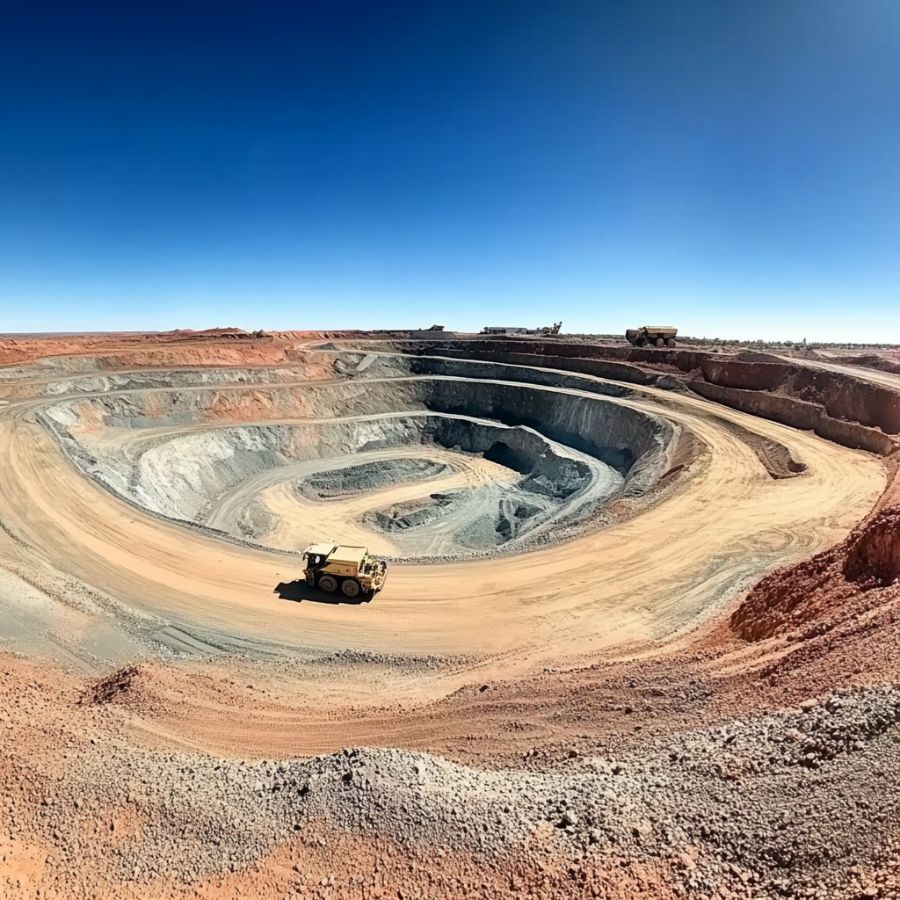
Concord is located in Cabarrus County. This area has a long mining history dating back hundreds of years. The land here sits on special rock formations called the Charlotte and Milton belts.
Concord’s geology features the Concord Plutonic Suite, which contains rocks like gabbro and syenite. These rocks are about 407 million years old, making them some of the oldest in the region.
Rhodochrosite can be found at the Snyder Mine, about 25 miles west of Concord. The pink mineral shows up with other minerals like pyrite and sphalerite. Collectors should look in areas where manganese minerals are common. The gentle hills and clay soils of Concord hide these treasures beneath.
The area’s unique mix of ancient igneous and metamorphic rocks creates perfect conditions for Rhodochrosite to form. Many gem hunters visit this location because of its reliable mineral deposits.
Sparta

Sparta is a small town in Alleghany County in North Carolina’s Blue Ridge Mountains. The town’s geology comes from the Ashe Metamorphic Suite, rocks that changed form millions of years ago during the Paleozoic era. These rocks include mica schists and amphibolites.
Rhodochrosite hunters should head to Bald Knob, about four miles north of Sparta. This area has been known to produce the pink manganese carbonate mineral that collectors prize. The Bald Knob deposit offers good chances of finding Rhodochrosite samples.
The mountain setting provides a beautiful backdrop for gem-hunting adventures. Local rocks also contain other minerals like quartz, pyrite, and galena.
The area’s streams sometimes expose fresh mineral deposits after heavy rains. Serious collectors often visit in spring when melting snow washes away dirt covering new specimens.
Kings Mountain
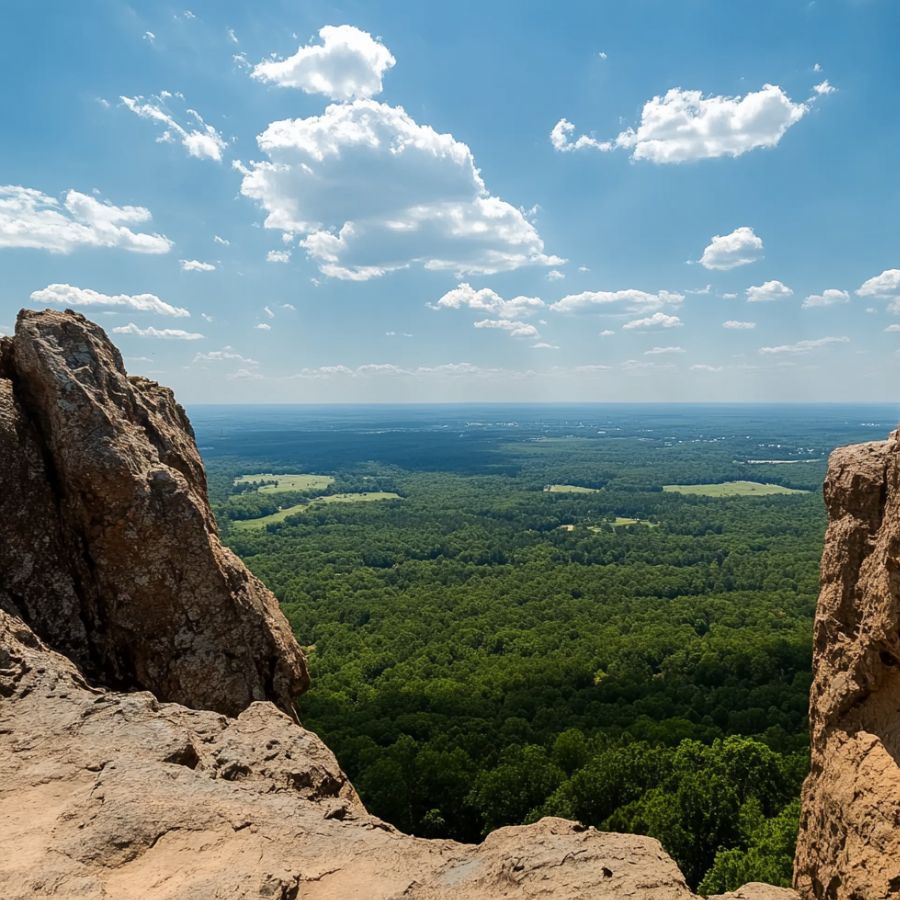
Kings Mountain spans across Cleveland and Gaston counties, about 30 miles west of Charlotte. The city got its name from a key Revolutionary War battle fought nearby. Geologically, Kings Mountain sits in a special spot between the Inner Piedmont and Carolina terranes.
This location has less-altered rocks with more mineral variety than surrounding areas. The best place to hunt for Rhodochrosite is the Foote Lithium Company Mine. Here, the pink mineral forms in pegmatite, a type of rock with large crystals.
The Rhodochrosite crystals at this site are usually small. Collectors often need magnifying glasses to see them clearly. Kings Mountain’s rocks include the Battleground and Blacksburg Formations from the Neoproterozoic era. These rocks contain schists, phyllites, quartzites, and amphibolites.
The area also has many other valuable minerals like spodumene, cassiterite, mica, and gold. Local mineral clubs sometimes organize field trips to collection sites around Kings Mountain.
Silver Hill Mine
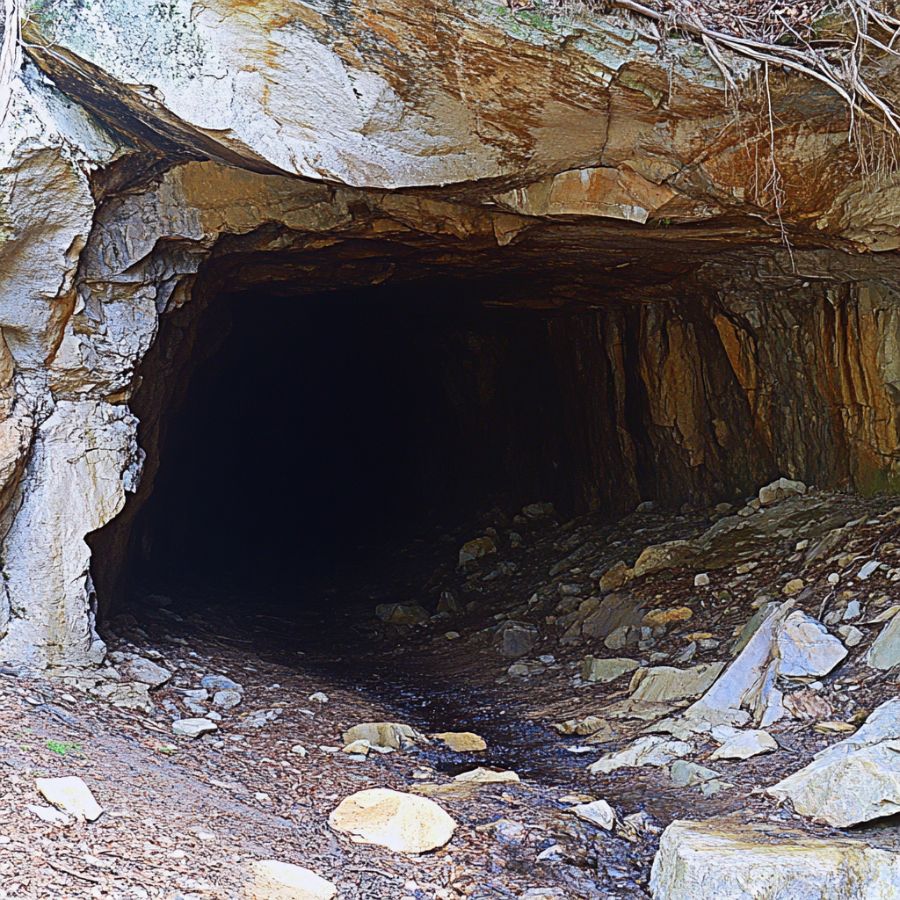
Silver Hill Mine is America’s first silver mine, opening in 1839. It sits in Davidson County’s Silver Hill Mining District, part of the Carolina Slate Belt. The mine lies about ten miles east of Lexington.
Underground, the mine has two main ore beds called the East and West Lodes. These beds sit about 30 feet apart within chloritic argillite rock. Rhodochrosite appears in a special manganese-rich layer between the 60 and 100-foot levels deep in the mine.
The surrounding rocks formed during the Cambrian period from underwater volcanic materials. Access to the ore bodies came through multiple shafts. The North Shaft and Sawmill Shaft connected with an inclined shaft at different levels.
Besides Rhodochrosite, the mine produced silver, lead, zinc, pyrite, sphalerite, galena, chalcopyrite, pyrrhotite, and gold. Few places in North Carolina offer such a combination of mining heritage and mineral diversity.
Macon Area
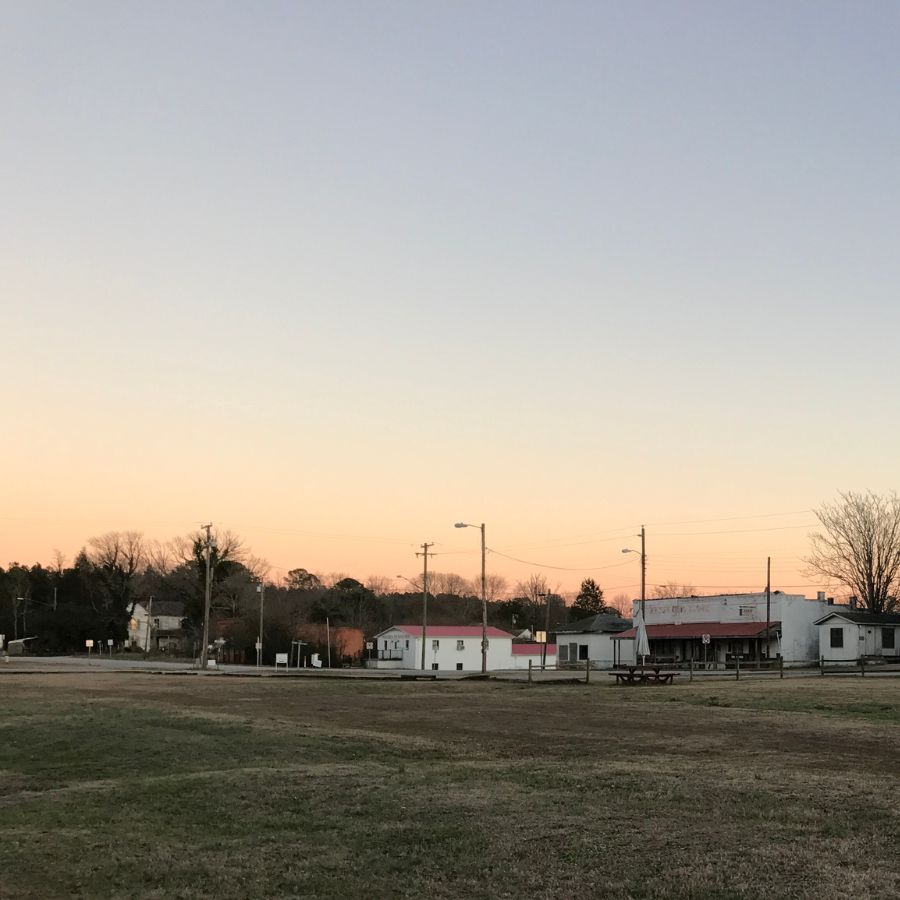
Macon County sits in western North Carolina’s mountains. Founded in 1828, it was named after political leader Nathaniel Macon. Franklin serves as the county seat. The Cherokee people originally lived here, with important sites like Cowee and the Nikwasi Indian Mound.
The area’s special geology creates a paradise for gem hunters. Rhodochrosite can be found among the county’s rich mineral deposits. The Cowee Valley area is famous for producing high-quality rubies with deep red colors that rival any in the world.
Rose Creek Mine in Franklin lets visitors dig for their own gems. They provide equipment for finding rhodolite garnet, quartz crystals, and Rhodochrosite.
Mason Mountain Rhodolite Mine in the Mason Branch area offers another good hunting ground. This mine became famous when rhodolite garnets were first discovered here in 1895.
Cherokee Ruby & Sapphire Mine in Cowee Valley gives miners a chance to search through native soil. The combination of beautiful mountain scenery and rich mineral deposits makes Macon County a top spot for both casual and serious gem hunters.
Places Rhodochrosite has been found by County
After discussing our top picks, we wanted to discuss the other places on our list. Below is a list of the additional locations along with a breakdown of each place by county.
| County | Location |
| Cabarrus | Whitney Mine |
| Gaston | Bessemer City Quarry |
| Gaston | LCA Mine |
| Mecklenburg | Capps Hill Mine |
| Vance | Tungsten Queen Mine |
| Mitchell | Grassy Creek |
| Mitchell | Horse Creek |
| Clay | Shooting Creek |
| Clay | Buck Creek |
| Macon | Otter Creek |
| Macon | Cullasaja River |
| Macon | Cowee Creek |
| Macon | Cartoogechaye Creek |
| Swain | Nantahala River |
| Jackson | Savannah Creek |
| Jackson | Caney Fork |

